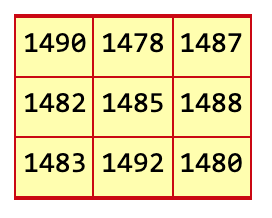I've posted about prime generating polynomials before, specifically:
- Prime Producing Linear Polynomials on October 28th 2018
- Prime Generating Quadratic Polynomials on March 18th 2020
A218456 | \(2n^3 - 313n^2 + 6823n - 13633\) |
Notice that some values are negative so we are considering absolute values here and ignoring the sign. The members of the sequence can be prime or composite. Figure 2 shows a plot of the prime values of the polynomial in the range from -8 to 102. I've chosen this range because values of -9 and 103 produce composite numbers.
 |
Figure 2 |
 |
Figure 3 |
However, given that we are only interested in positive values then the graph of \(y=|2n^3 - 313n^2 + 6823n - 13633|\) is as shown in Figure 4 and reflects what is shown in Figure 1.
 |
Figure 4 |
Interestingly, 26627 is also a member of another sequence produced by a prime generating polynomial viz. OEIS A320772:
A320772 | Prime generating polynomial: a(\(n\)) = \( (4n - 29)^2 + 58\) |
Figure 5 shows the numbers that are generated in the range from -8 to 102 (the same range as for the previous cubic polynomial). As the values exceed 28, it can be seen that the number of primes generated decreases. Overall, the density of primes in the range is 65.5% or 72 out of 110.
 |
Figure 5 |





















